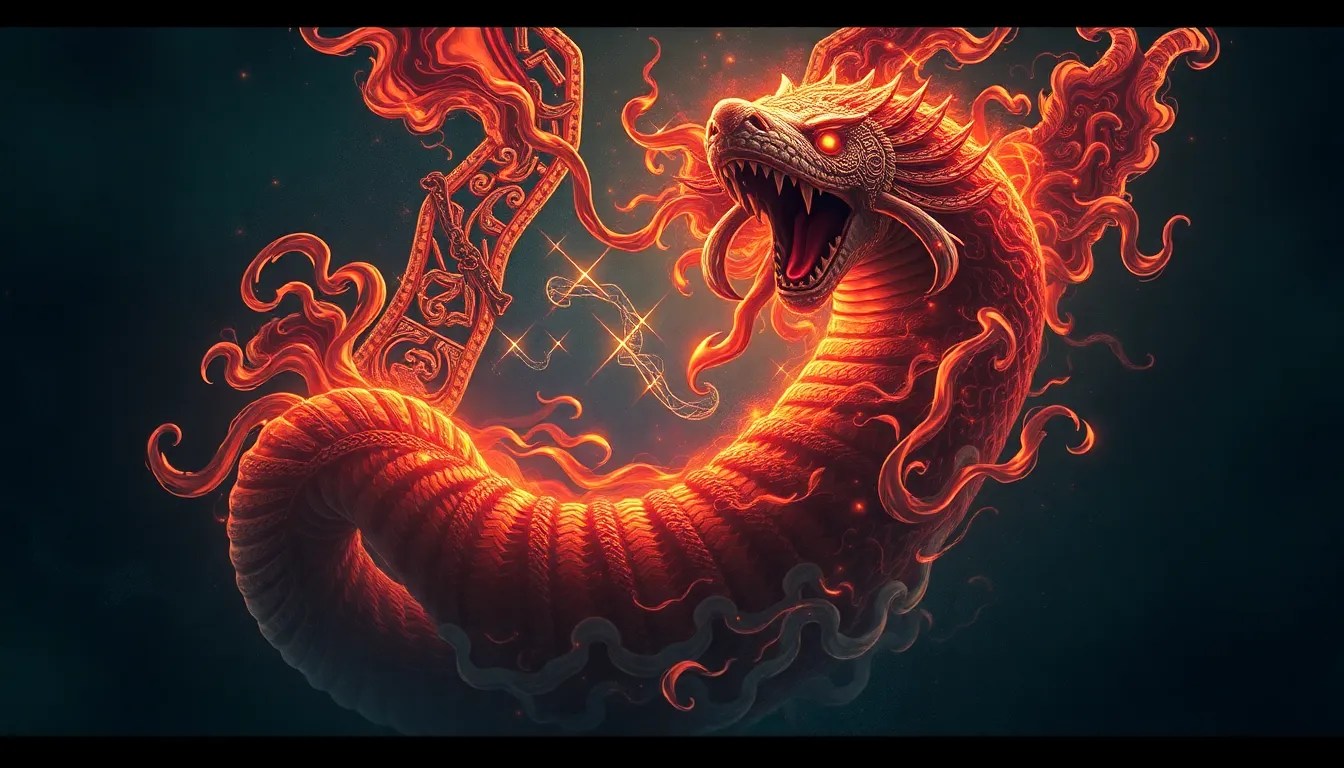The Myth of the Aztec Serpent: Transformation and Rebirth
I. Introduction to Aztec Mythology
Aztec mythology is a rich tapestry of gods, creation stories, and cosmological beliefs that provide insight into the worldview of the Aztec civilization. Central to this belief system is the understanding of life, death, and the interconnectedness of all things. The Aztecs viewed the universe as a dynamic entity, where cycles of creation and destruction were perpetual.
Serpents held a significant place in Mesoamerican cultures, often symbolizing power, fertility, and the duality of existence. In Aztec belief, serpents were not merely creatures of the earth; they were intertwined with the divine, representing the forces of nature and the cosmos.
II. The Symbolism of the Serpent in Aztec Lore
In Aztec mythology, the serpent is a multifaceted symbol representing various aspects of life and the universe. Its significance can be understood through the following themes:
- The serpent as a representation of duality: The serpent embodies the balance of opposing forces—life and death, creation and destruction, the earthly and the divine.
- Connections to fertility, water, and earth: Serpents are often associated with agricultural fertility, as they are believed to bring rain and nourish the earth, facilitating growth and sustenance.
III. Quetzalcoatl: The Feathered Serpent
One of the most prominent serpentine deities in Aztec mythology is Quetzalcoatl, known as the Feathered Serpent. His attributes and significance are profound:
- Origins and attributes of Quetzalcoatl: Quetzalcoatl is depicted as a serpent adorned with feathers, symbolizing the connection between the heavens and the earth. He is associated with wind, air, and learning.
- Role in creation myths and cultural practices: Quetzalcoatl is credited with the creation of humanity and is often depicted as a benevolent god who taught the Aztecs essential skills such as agriculture, writing, and the arts.
IV. Transformation and Rebirth Themes in Aztec Myths
The themes of transformation and rebirth are central to Aztec mythology, particularly in relation to serpents. These themes manifest in various ways:
- The cyclical nature of life and death: The Aztecs believed in a continuous cycle of life, death, and rebirth, reflecting the natural cycles observed in the world around them.
- How transformation is depicted through serpent imagery: The shedding of a serpent’s skin symbolizes renewal and the potential for growth, making the serpent a powerful emblem of transformation.
V. Rituals and Ceremonies Involving Serpent Deities
Rituals and ceremonies played a crucial role in Aztec culture, particularly those involving serpent deities. These practices served various purposes:
- Overview of serpent-related rituals: Rituals often involved offerings, dances, and ceremonies aimed at appeasing serpent gods like Quetzalcoatl, ensuring fertility, rain, and abundance.
- Significance of these practices for community and spirituality: Such rituals fostered community bonds and reinforced the spiritual connection between the people and the divine, emphasizing the importance of acknowledging and honoring the forces of nature.
VI. The Aztec Serpent in Art and Iconography
The representation of serpents in Aztec art and iconography is abundant and varied, reflecting their significance in the culture:
- Representation of serpents in Aztec art: Serpents are depicted in various forms, from elaborate stone carvings to pottery and textiles, often showcasing their connection to the divine and nature.
- Analysis of artifacts depicting the serpent motif: Artifacts such as the Aztec calendar stone and various codices illustrate the cultural importance of serpents, often integrating themes of time, agriculture, and cosmology.
VII. Legacy of the Serpent Myth in Modern Culture
The legacy of the Aztec serpent myth continues to resonate in modern culture, influencing art, literature, and spirituality:
- Influence on contemporary interpretations of Aztec mythology: Modern interpretations often highlight the serpent as a symbol of wisdom, transformation, and connection to nature, drawing parallels to contemporary issues of sustainability and growth.
- The serpent as a symbol of resilience and transformation today: The imagery of serpents is often used to convey messages of change and resilience, echoing the ancient beliefs of the Aztecs.
VIII. Conclusion
In summary, the myths surrounding the Aztec serpent are integral to understanding Aztec culture and its cosmology. The serpent serves as a powerful symbol of transformation and rebirth, reflecting the cyclical nature of life and the interconnectedness of all things. As we continue to explore and interpret these ancient narratives, the legacy of the serpent myth endures, reminding us of the beauty and complexity of life.



